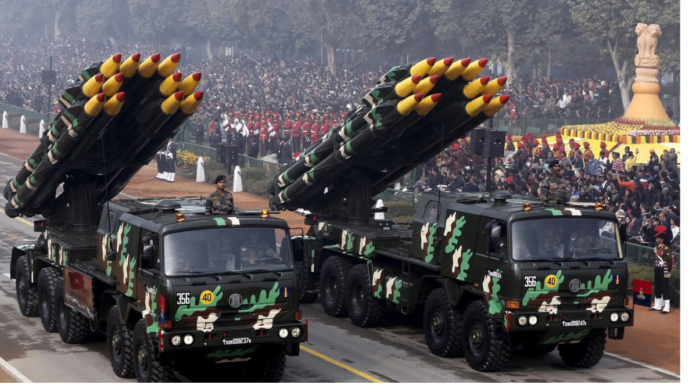By gradually developing and deploying its Ballistic Missile Defence (BMD) system, the Defence Research and Development Organisation (DRDO) is strengthening India’s defense capabilities.
Currently, the country is protected from incoming ballistic missiles at different altitudes by a multi-layered shield.
The Prithvi Defence Vehicle (PDV) and Advanced Air Defence (AAD) interceptor systems have been deployed around the nation as part of the BMD program’s Phase I. These systems offer a strong defense against medium-range threats because they are built to intercept ballistic missiles with a maximum range of 2,000 km.
By deploying these interceptors, India has improved its defensive capabilities and showcased its advancements in domestic missile defense technology.
The recent successful testing of the Phase-II BMD system demonstrated DRDO’s ability to defend against increasingly sophisticated ballistic missiles. The development of the AD-1 and AD-2 modern interceptor missiles is a part of this phase.
The two-stage, solid-propelled Phase-II interceptor is a ground-launched device intended for endo-to low exo-atmospheric interception. It also serves as a demonstration of the country’s capabilities to intercept ballistic missiles in the 5,000 km class. This system integrates improved interceptor missiles, low-latency connectivity, and long-range sensors into a network-centric warfare paradigm.
The goal of DRDO’s Phase III advancement is to build two new interceptor missiles, which are internally called AD-AH and AD-AM. Research and development for these missiles is now at an early level, and developmental testing is anticipated to start within the next four to five years. These interceptors are expected to be able to neutralize hypersonic threats, while exact specifics concerning their capabilities are still being withheld.
Because of their high speeds, maneuverability, and capacity to stay inside the atmosphere for lengthy periods of time, hypersonic projectiles—such as Hypersonic Glide Vehicles (HGVs) and Hypersonic Attack Cruise Missiles (HACMs)—present a serious threat. They are challenging to intercept because of these qualities, particularly in the final stages of their trajectory.
In order to effectively tackle these hypersonic threats, it is anticipated that the AD-AH and AD-AM interceptors will be outfitted with cutting edge technologies. DRDO seeks to improve India’s defenses against the next wave of missile threats by focusing on these advanced projectiles. The stepwise development and deployment of advanced missile defence systems by DRDO is a testament to India’s dedication to national security.
Also Read: India boosts defence exports, but questions remain
DRDO is committed to staying abreast of new threats, as evidenced by the successful deployment of Phase-I systems, the current testing of Phase-II interceptors, and the ambitious plans for Phase-III development. India is well-positioned to maintain a strong and resilient defense posture against a variety of ballistic and hypersonic threats as long as DRDO keeps innovating and improving its missile defense capabilities.



